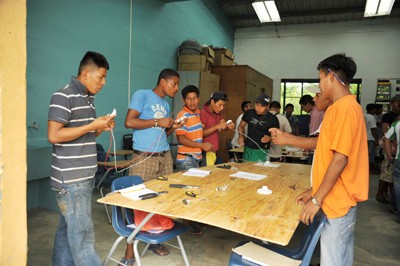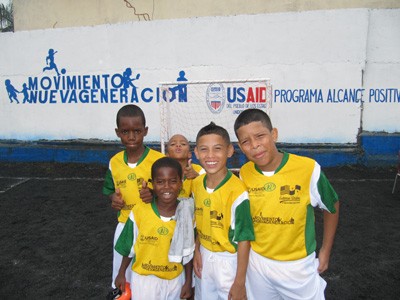Speeches Shim
An Enduring Partnership, Changing Lives
The United States Agency for International Development (USAID) began its partnership for development with Panama in 1961. With the goal of eradicating poverty in rural communities, the response focused on agricultural programs for small-scale and subsistence farmers, community development, and education reform.
Between the mid-1960s and 1982, the Government of Panama embarked on a major expansion of the physical infrastructure and public facilities and services. The construction of roads, dams, health centers, schools and housing contributed to a fundamental transformation in the lives of the Panamanian people, and USAID support played an important part in bringing about this positive change.

USAID also assisted in strengthening agribusiness, crop diversification, and agricultural research capability that increased incomes for hundreds of thousands of Panamanian families. Urban rehabilitation, the development of new industries, and human resource improvements led to new economic and employment opportunities. Along with expanded growth came the construction of urgently needed streets and roads, water and sewer systems, housing, community facilities, vocational training, and community action programs.
In the health sector, USAID supported rural health nutrition programs, which emphasized preventive health care and access to clean drinking water.
To protect Panama’s natural beauty and resources, USAID programs addressed deforestation and expanded the use of low-cost technologies to meet energy demand.
In addition to better living conditions for rural and urban families, Panamanian institutions received the support and training they needed to continue the development process. In time, assistance also included the implementation of necessary reforms and institutional changes in accordance with Panama’s national goals and objectives in addressing its economic challenges.
In the 1990s, USAID assistance jump started Panama’s economic recovery and private sector reactivation following the national uprising and crisis that ended a twenty-year military dictatorship as well as implemented development projects consistent with the goal of a stable, secure, prosperous, and democratic Panama. Support included development assistance to protect and monitor the health of the Panama Canal watershed; strengthening democratic institutions in the judicial branch, legislative branch, and the electoral tribunal to support Panama’s emerging democracy; modernizing the administration of the public finances; and promoting policy reforms in the trade and investment sectors. Building on past successes, development assistance contributed to the consolidation of democracy, environmental stewardship, community empowerment and trade competitiveness for poverty reduction and conflict mitigation.

Three legacy institutions established with USAID assistance continue to provide financing for environmental initiatives that help safeguard Panama’s natural resources for future generations. The Ecological Trust Fund finances environmental projects, NGOs, community-based organizations, and academic institutions. The Chagres National Park Fund helps improve the management of the Upper Chagres River Basin, a critical area that provides 45 percent of the necessary water for Panama Canal operations and 80 percent of the water for human consumption in Panama City and Colon, impacting 1.5 million people. The Darien National Park Fund continues to channel money to strengthen protection of the 1.4 million-acre Darien National Park.
During the last years of engagement, USAID contributed significantly to create opportunities for youth from vulnerable communities; strengthen the capacity of governmental and nongovernmental actors; advance community development and governance; promote sustainable community forestry, clean production, and environmental policies; and facilitate the implementation of justice system reforms while building partnerships and strategic alliances towards sustainability.


Comment
Make a general inquiry or suggest an improvement.